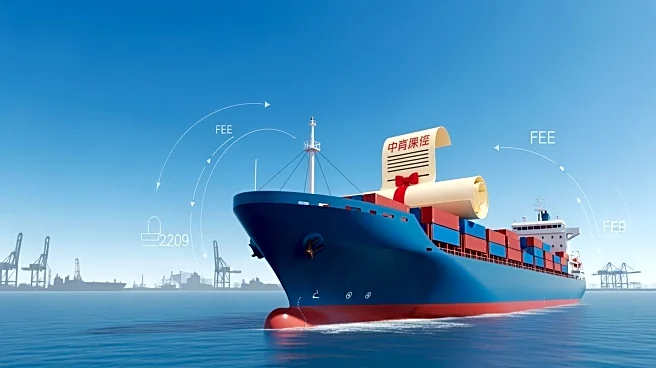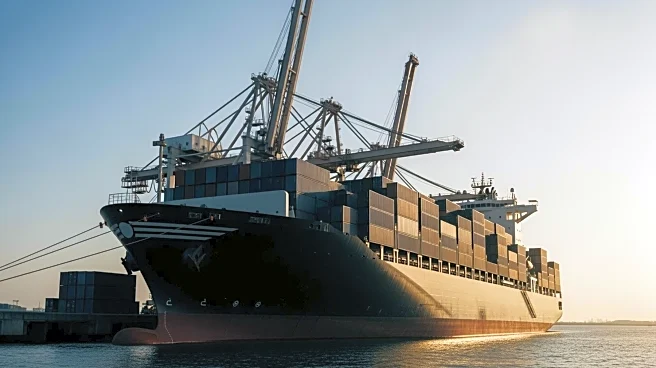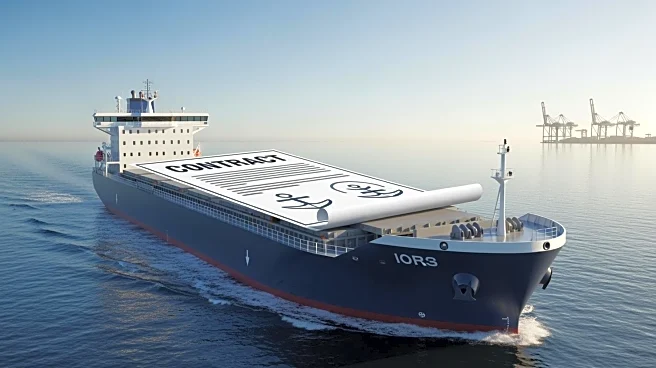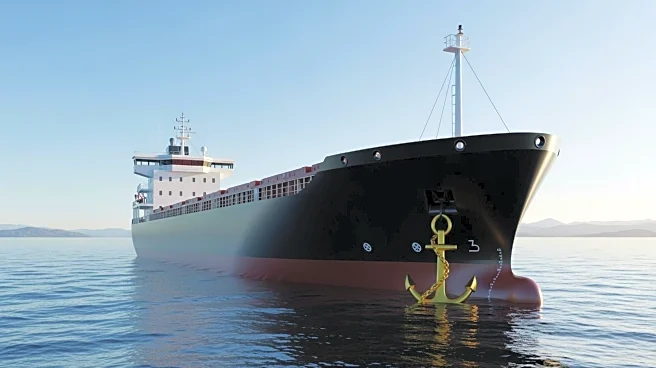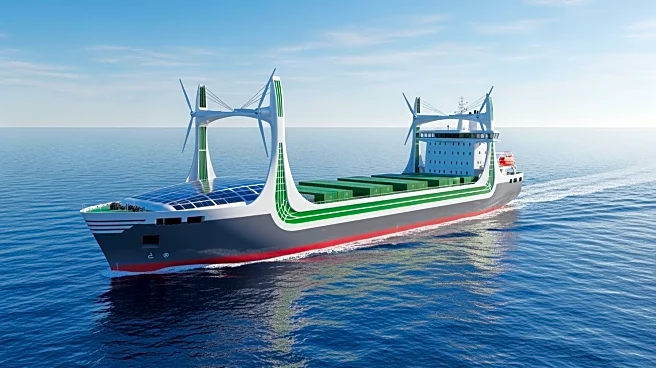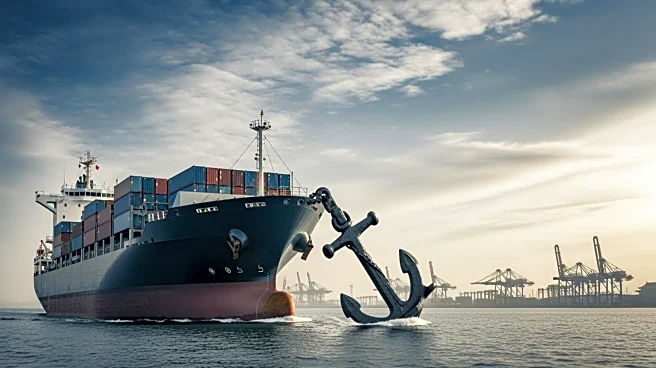What's Happening?
The shipping industry is anticipating a significant wave of ship recycling, as highlighted by industry trade group BIMCO. The organization notes that many older ships have remained in service longer than expected, creating a substantial market overhang
ripe for recycling. According to Niels Rasmussen, Chief Shipping Analyst at BIMCO, the current minimum recycling overhang is estimated at 500 ships and 1.8 million TEU. This figure could rise to a maximum of 850 ships and 3.1 million TEU, based on historical data from weaker market conditions in the 2010s. The share of ships aged 20 years or older has increased from 16 percent at the beginning of 2020 to 24 percent currently, marking the highest level since the early 1970s. Despite this, only 10 container ships have been recycled this year, continuing a trend of low recycling activity since 2021.
Why It's Important?
The potential recycling wave is significant for the shipping industry as it could lead to a reshaping of fleet dynamics. Older ships, which have been used to fill capacity gaps, are likely to be recycled, potentially impacting shipping capacity and market rates. The large orderbook and regulatory requirements to improve ship efficiency could accelerate this process. The recycling of older ships may also drive fleet growth through larger vessels, affecting the deployment of smaller ships and potentially altering trade routes. This shift could have economic implications for shipping companies and global trade patterns, influencing freight rates and operational strategies.
What's Next?
Future recycling activity is difficult to predict accurately, but BIMCO estimates an overhang of 6-10 percent of currently trading ships, equivalent to 33-55 percent of ships older than 20 years. This overhang is larger than the orderbook for all ship segments, particularly for smaller vessels under 8,000 TEU. As fleet growth is expected to be driven by larger ships, there may be further cascading of larger ships into routes currently served by smaller vessels. This could lead to changes in shipping logistics and operational strategies, as companies adapt to new fleet compositions and market demands.


